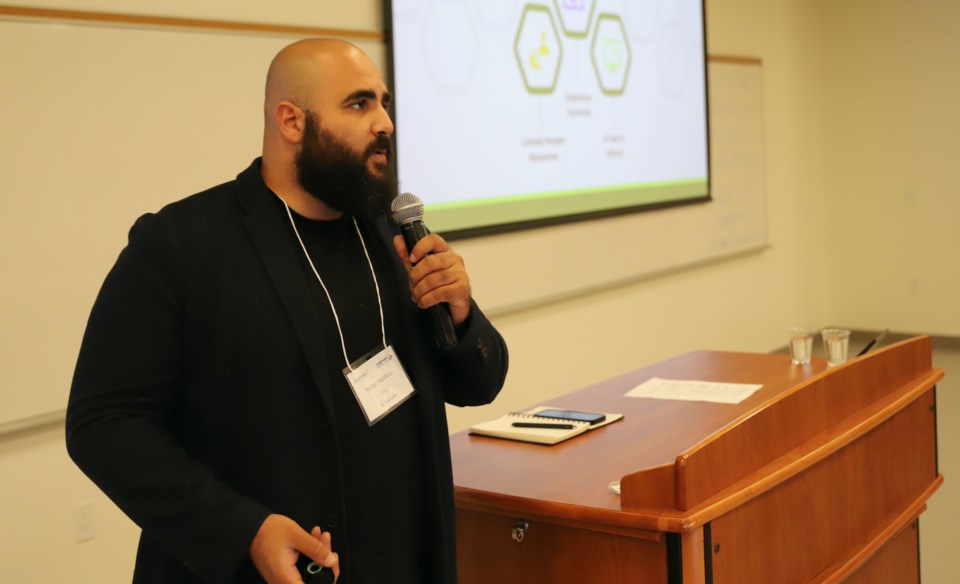OLDS — A company offering an early-detection wildfire system was among 17 that promoted their products with the hope of interesting investors during the first DiscoveryLab@AgSmart Pitch, held recently in the Werklund Agriculture & Technology Centre.
Nafaa Haddou, co-founder and CEO of Edmonton-based Nu Terra Labs promoted the company’s FireSafe detection and management systems during the July 29 event which use artificial intelligence (AI) modelling and drones to predict and spot wildfires.
He told the approximately 120 people in attendance and many more watching online around the world about the system.
He said Nu Terra Labs is currently working with the City of Edmonton to run a pilot in that city’s river valley and is coordinating with the town of Invermere, B.C. to run a pilot project there next spring.
Haddou said he and his co-founder have more than a decade of experience working in the information technology sector.
He said they were spurred to create the FireSafe detection and management system in the wake of horrendous destruction caused by major wildfires such as the Fort McMurray wildfire in 2016.
As he made his pitch, a wildfire that roared through part of Jasper in late July was still classified as out of control, and people remained evacuated with no word on when they could go home and re-start their lives.
Haddou said information gleaned via the FireSafe technology goes to a centralized command system, “providing a 24/7 area for them to assess what’s going on as well as notify first responders, communities in the event of a fire.”
“Effectively, our business model is based on a service model, allowing communities to bring in units when they need them over the fire season and ship them out to other areas of concern during winter, to help save on costs,” he added.
Haddou stressed that the company’s service merely detects and pinpoints wildfires and fire trouble spots.
“The response, once it’s ignited, is under the full operational control of Alberta Wildfire Management,” he said.
He was asked about the possibility of the system triggering false positives.
Haddou conceded there’s always a risk of that, but said their system is designed to minimize that possibility.
“Granted, there’s always going to be false positives, but the beauty of the AI models, which is a proprietary and trade secret, is the capacity to learn and improve, based on where they’re set in regions, to reduce those false positives over time,” he said.
Haddou said there are competitors out there offering similar systems but said theirs is better.
“We started in the agri sector industry. And where we built our initial model was on plant detection, plant disease protection, so we do have a better approach in regards to vegetation profiling,” he said.
Another questioner asked if high-res satellite imagery couldn’t provide the same service.
Haddou said in theory it could, but their resolution is still no match for technology that can scan the vegetation in a forest more precisely, “in between trees, underbrush and such.”
“When it comes to the actual density and vegetation profile –– there’s still difficulty in assessing it (via high-res satellite imagery). It is fantastic for large area surveying, but those critical areas around communities are still a risk,” he said.



